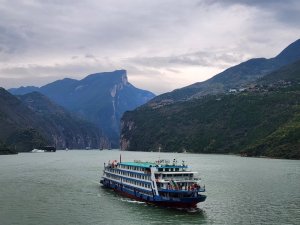
Nicole Anderson completes a journey on the Yangtze River and 3 Gorges China to discover firsthand the stunning natural beauty for which this amazing waterway is renowned.
Few rivers on the planet could claim coming close to displaying the astonishingly beautiful natural sights that you will find when you explore sections of the Yangtze River in China. Not surprisingly this amazing river has been a source of inspiration for writers, poets, travellers and explorers for many hundreds of years.
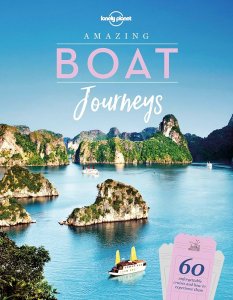
This particular journey is also featured within Lonely Planet’s ‘Amazing Boat Journeys’ and for good reason. For anyone who loves gliding through calm waterways past stunning scenery, this trip features very high on the ‘must-do’ list.
We couldn’t wait to begin our cruise on the Yangtze River. We had just completed our exploration of Central China by 2 bullet trains arriving at Yichang with the planned itinerary to cruise the Yangtze River all the way to Chongqing in China’s southwest.
The Yichang to Chongqing route (or vice versa) is without doubt the most stunning due to the fact that during the days of this cruise you travel through the famously beautiful 3 Gorges along the river. Not only are the 3 Gorges amazing sites, you also get to stop along destinations on the way that are gateways to other natural wonders including the Snowy Jade Cave and the ‘Lesser 3 Gorges’.
Here I have included all the main highlights of the cruise together with photos of this spectacular journey so you can judge for yourself whether cruising the Yangtze River and 3 Gorges is something you would likewise be enticed to do.
For readers that are not that familiar with the Yangtze River, let’s start with some factual data before beginning to unravel the wonders we experienced on this trip.
The Yangtze River
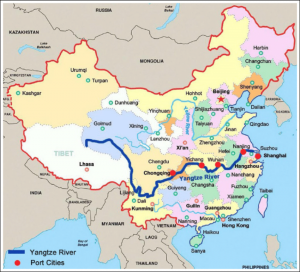
A lifeline for people providing food, transportation, and commerce for many hundreds of years, the Yangtze River is the longest river in Asia and the third longest in the world after the River Nile in Africa and the Amazon River in South America respectively. At 6,300 km (3,915 mi) long it is also the longest river in the world to flow entirely within one country.
Starting from Qinghai province on the Tibetan Plateau in northwest China, this freshwater river flows eastwards all the way over to Shanghai, emptying into the South China Sea. Traveling more than halfway across the country, the Yangtze River basin is around 1.8 million sq km or nearly one-fifth of China’s land area.
In terms of river transport, the Yangtze River is one of the busiest in the world with one-third of China’s population (or some 400 million people) living in the area covered by the Yangtze River basin. Today the Yangtze River basin provides about half of all the fish eaten in China and two-thirds of its rice. Industries and farming here contribute as much as 40% of China’s whole economy.
According to the World Wildlife Foundation, the Yangtze and its river basin are home to 350 types of fish, 145 different amphibians, 166 reptiles, 762 kinds of birds, 280 mammals (including the giant pandas), and more than 14,000 different plants. There is much said about the pollution of this river due to the population size and number of vessels of all sizes that ply the river daily. Having said that, there is still no denying the immense natural beauty that confronts you, particularly on the route we took traveling the river.
Yichang – our starting point
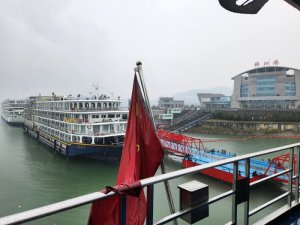
Having arrived at the train station, we boarded a modern, large, and comfortable coach bus to head to the port of Yichang on the Yangtze River. It was quite a distance, traveling through several lengthy tunnels through local hills/mountains to reach the port, checking in to the ship ‘The China Goddess 2’ after dark.
The check-in process was smooth and consisted of arriving at the port terminal building, clearing security, before traveling down to the dock area via funicular, boarding your ship, and going through a check-in process where we were allocated our cabin. The first glimpse of this area fronting the Yangtze River did not disappoint, being quite scenic and serene, albeit that this was nothing compared to what we would see ahead on this cruise.
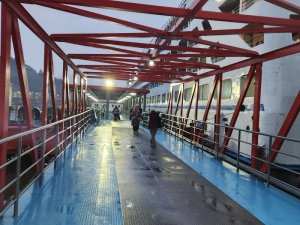
Cruise ships here are docked against one another (similar to what we found with ships cruising the Nile in Egypt), so you actually walk through one or more ships to get to your ship and you do need to watch your footing as you move between gangplanks set up between the moored vessels but staff are always helpful and there to guide you.
Yichang is one of the main tourist stops along the Yangtze as is Chongqing with both regarded as main gateways to the 3 Gorges section of this famous waterway, with many cruises operating between these two cities. On this trip we were bound for Chongqing and had so much natural beauty over a number of days going through the 3 Gorges, the Lesser 3 Gorges, and local attractions to look forward to.
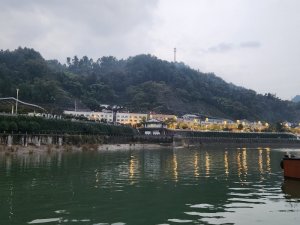
The China Goddess 2
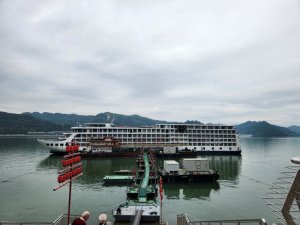
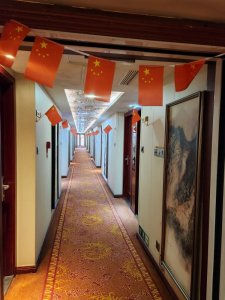
Launched in November 2014, the China Goddess 2 is marketed as a 4-star vessel. At the time of taking our cruise, the ship was scheduled to undergo refurbishment and upgrade, with our cruise being the second last before this was to occur. Weighing in at 9,600 tons over 7 decks its length is 120 m with a beam of 19 m, a passenger capacity of 400 with 120 crew. Its speed was noted as 26 km/h and the décor was in Chinese themes very suited to the Yangtze.
The ship itself had all the usual facilities you would expect including large foyers, lounges, dining rooms and bars, sun deck, spa and massage facilities, a fitness center, laundry service, and souvenir shops. We were allocated to a smaller, more intimate dining room as we had upgraded our accommodation on this cruise which also included beverages and gave us the opportunity to get to know fellow passengers better when we got together during mealtimes.
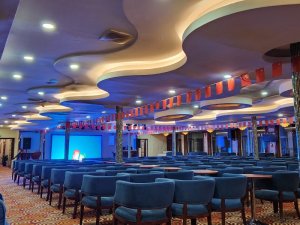
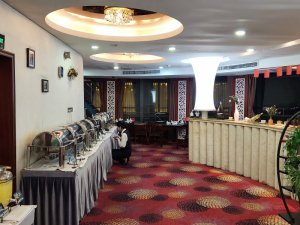
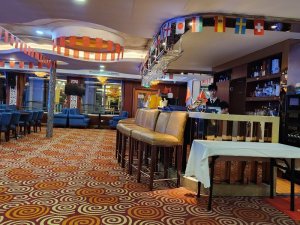
When the ship was not traveling through the 3 Gorges, was at a port, or was sailing during the night, there were a number of activities planned within the cruise itinerary. These included the Captain’s Welcoming Party, a Cruise Cabaret Party, screening of English and Chinese movies, and fun/learning activities such as classes in Chinese writing and learning to make and cook Chinese dumplings.
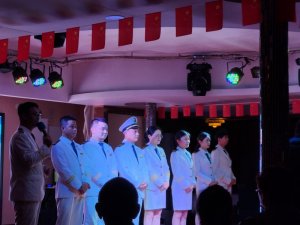




The sailing times for these river cruise ships are understandably determined so that the vessel travels through the most beautiful sections of the Yangtze River during daylight hours. For us, this meant a nighttime departure which was to occur on Day 2, providing a day at Yichang first.
The 3 Gorges Dam
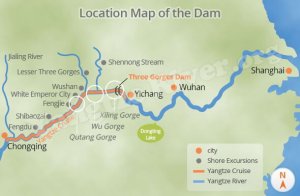
On the day prior to leaving Yichang, we opted to join a tour to see the 3 Gorges Dam situated in near Sandouping in Yiling District, around a 30-minute drive from the port. It was very misty as we took the drive toward the Dam, the weather overcast with rain also on the way.
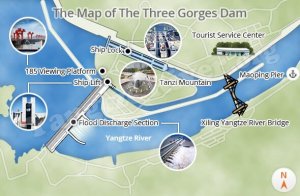
There is substantial security surrounding the entire area of the 3 Gorges Dam, which you need to pass through. This dam is really an impressive feat of human engineering. We are talking about a 60-story, mile-wide structure that contains the world’s biggest hydroelectric station.
This is the world’s largest power-producing facility and the world’s largest hydroelectric dam. Right next to the actual dam is the visitor center contained within the spacious Taianzi Park created to showcase the dam to many tourists.
Opened in 2003, this massive project literally changed the face of the Yangtze River in this region, displacing millions of local residents, flooding archaeological sites, and wiping out thousands of acres of wildlife habitat in order to provide clean energy to replace coal.
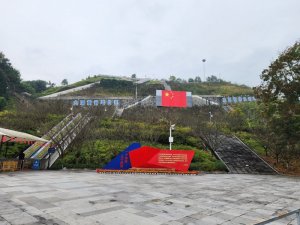
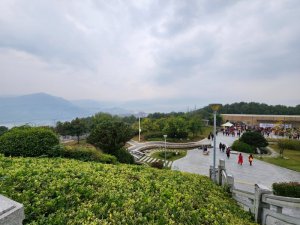
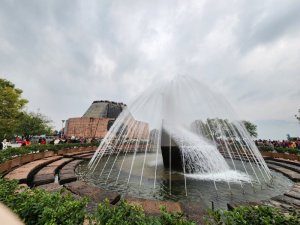
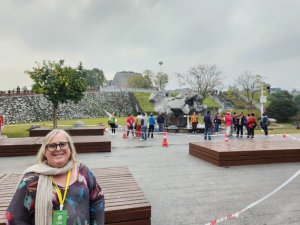
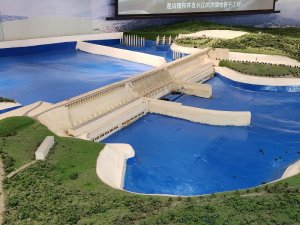
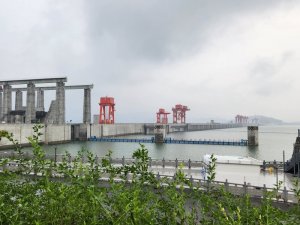
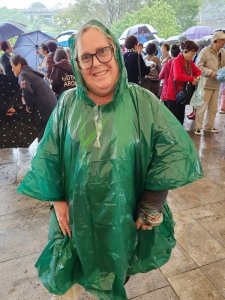
To quote Wikipedia: “In addition to generating electricity, the dam was designed to increase the Yangtze River’s shipping capacity. By providing flood storage space, the dam reduces the potential for flooding downstream, which historically plagued the Yangtze Plain. In 1931, floods on the river caused the deaths of up to 4 million people. As a result, China regards the project as a monumental social and economic success, with the design of state-of-the-art large turbines and a move toward limiting greenhouse gas emissions.”
Vessels headed east or west along the Yangtze in this area also need to travel through the locks here which either raise or lower your ship to the new level of the river as you continue to your destination. It is a process that is always interesting to watch and this operates essentially the same way as anywhere else in the world such as the Panama Canal for example.
During our time here, we visited a number of buildings containing much in the way of information, displays, scale models of the dam, souvenir shops as well as observation points looking down on the dam and ship locks at work. It was extremely interesting to see such a huge project interconnect with the Yangtze River and understand the benefits it brings to so many people.
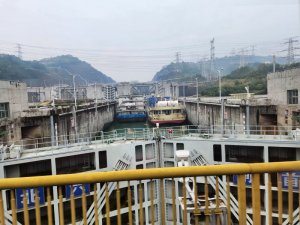
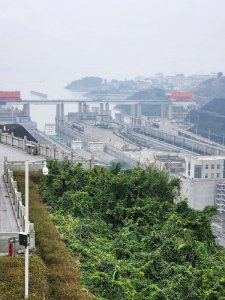
The Yangtze River 3 Gorges
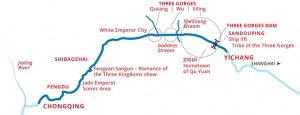
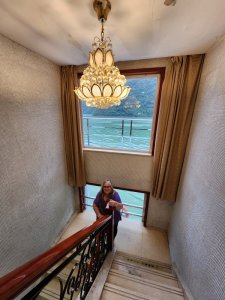
The Three Gorges Reservoir region is a mountainous stretch along China’s Yangtze River, between Yichang and Chongqing cities. Carved between steep cliffs are its trio of gorges, Xiling, Wu, and Qutang. I can not think of a better way to enjoy 5 days on this cruise than to relax and take in the natural beauty of this region.
Each of these 3 Gorges is stunning and were believed to have formed by ‘mountain folding’ in the east of Sichuan Province and the west of Hubei Province, including the Wu Mountains which were the outcome of the Yanshanian movement (Source: Wikipedia) around 70 million years ago.
These days the word has certainly got out about the river cruising experience here. The cruises are extremely popular for both domestic and international tourists evidenced by the number of cruise vessels we passed along the river. This waterway is still a significant means of transportation of goods as well with ships of all shapes and sizes carrying cargo.
In some respects, we found the Gorges on the Yangtze River were reminiscent of the impressive fjords we saw in Norway and also the sights of the Milford Sound we enjoyed in New Zealand. However, the 3 Gorges along the Yangtze we believe are still in a class of its own. The misty outlook, the significant culture and serene beauty abounding here in China provides a unique ambiance and feel that simply can’t be matched.
An important point: The Yangtze River 3 Gorges are not to be confused with another 3 gorges known as ‘The Lesser 3 Gorges’ which you do have the option of seeing as a separate excursion while you are on this cruise from Yichang to Chongqing. I cover our experience of ‘The Lesser 3 Gorges’ later on in this article.
The Xiling Gorge
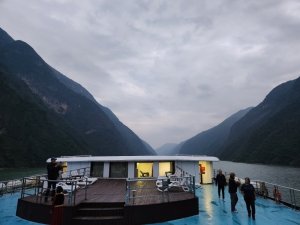
As we departed in the evening from Yichang, we were told to ensure we rise early the following morning as that is when we would enter the Xiling Gorge. We were up on the top deck of the ship prior to sunrise to ensure we did not miss any of the beautiful views this part of the world is renowned for. Needless to say, from the images captured, we were not disappointed.
Running from Zigui to Nanjin Pass, some 66 km long, the Xiling Gorge is the longest of the Yangtze River 3 Gorges and is located entirely within Hubei Province.
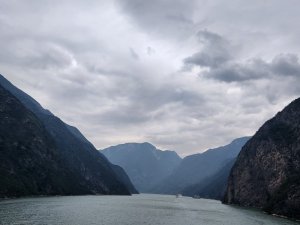
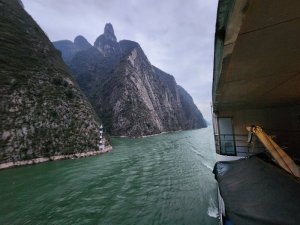
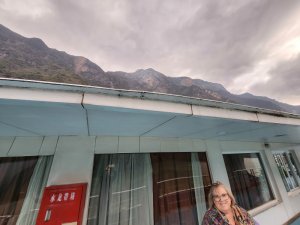
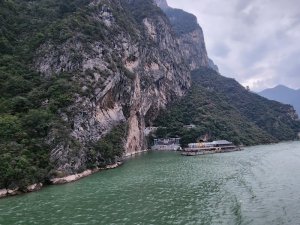
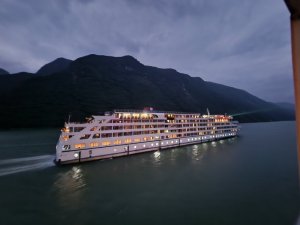
The crystal-clear waters, suspended walkways, and hanging coffins of Shennong Stream (an offshoot of the Yangtze River within the Xiling Gorge) draw tourists for mini-cruises to explore this side attraction. The hanging coffins are a fascinating historical attraction that exist in a number of locations in this region and we looked at this more closely later on.
Also in this area is the Sanyou Cave (/san-yo/ ‘three travelers’), where three famous ancient poets are said to have stayed, and is regarded as the best cave in the 3 Gorges area. For the adventurous Sanyou Cave is about 10 km (6 mi) from Yichang on Xiling Gorge.
The Wu Gorge
Wu (‘Witch’) Gorge is about 40 km (25 mi) long and begins after passing the Badong (pronounced ‘bar-dong’ literally: ‘east of East Sichuan and Chongqing’) county and continues to where the Daning River joins the Yangtze at Wushan (pronounced ‘woo-shan’ translation: ‘witch mountain’) County Town.
Noted for its deep and serene scenes, the Wu Gorge is full of zigzags, as you look up to its spectacular, triangular-looking twelve peaks, rising mists, and beautiful nature. The river cuts through the Wushan Mountains and is regarded by many to be the most beautiful part of the Yangtze with green trees and bushes, together with fogs and clouds, covering the high peaks.
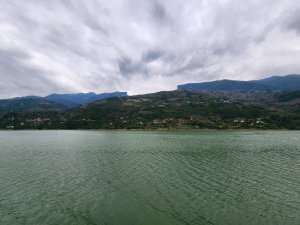
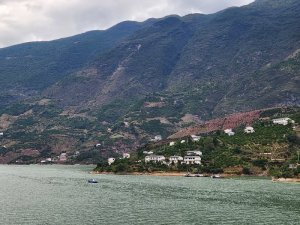
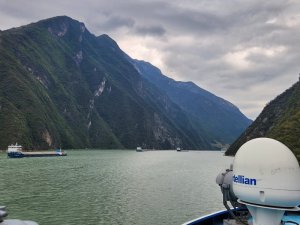
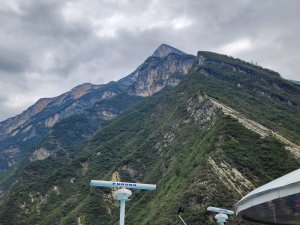
The best known of the peaks is the poetic Goddess Peak, the graceful shape of which resembles a girl looking down at the boats in the river. Many mythological tales and countless number of poems have been written about this particular peak.
The Daning River at the eastern exit to Wu Gorge is where the city of Wushan is and where you can visit and explore the Lesser Three Gorges (covered a bit further on).
The Qutang Gorge
Qutang (pronounced ‘chyoo-tung’, translation: ‘Qu (a family name) pond’) Gorge begins at the county town of Fengjie (Daxi Stream in the east), about 500 km (300 miles) downstream from Chongqing City and finishes at the White Emperor City in the west in Chongqing Municipality.
Also known as Kui Gorge, this gorge is the shortest being only 8 km long. The narrowest point of the river bed is only several dozen meters while the widest point is more than 1,800 meters – all the while being surrounded by peaks as high as 1,000-1,500 meters. A very impressive sight from the river.
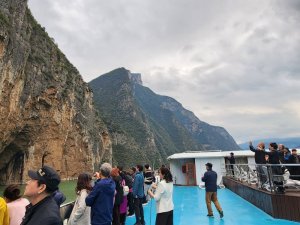
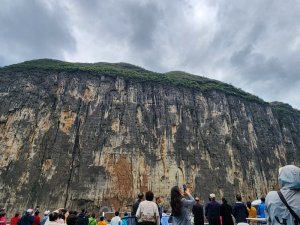
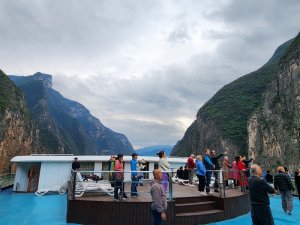
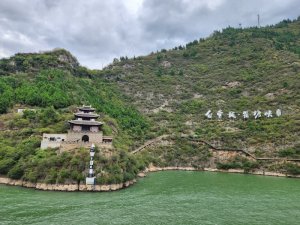
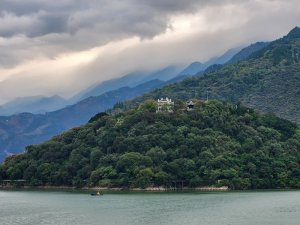
There are many historical/natural sites in Qutang Gorge which concludes at the ancient town of Fengjie. These include the Eight-Unit Formation and Yufu Pagoda. Inside the gorge, on a hilltop on the north bank are the town of Baidicheng which boasts many rare historical relics, the dangerous ancient plank path along a cliff face and the mysterious Bellows Gorge.
The Lesser 3 Gorges
These are situated along the smaller and narrower Daning river which converges with the Yangtze river near Wushan. Many people have said that the Lesser 3 Gorges are more beautiful that the main 3 Gorges on the Yangtze river, providing a more intimate and closer experience. It is said that they exceed the experience of the main 3 gorges in their beauty and tranquillity.
No doubt this has to do with the fact that you have to travel in much smaller boats here as the larger cruise vessels simply can’t get through all parts of the Lesser 3 Gorges. Smaller boats of course are lower to the river level, making you feel closer to the river and the height of the peaks you pass seem more dramatic and that much higher.
If you do the Yangtze River cruise between Yichang and Chongqing (or vice-versa), I could not recommend seeing the Lesser 3 Gorges enough. It is something you will always remember just as much as the main cruise experience.
Wushan – the gateway to the Lesser 3 Gorges
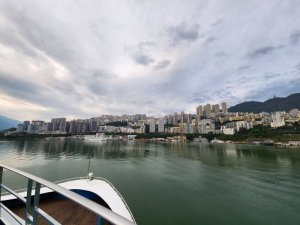
Wushan (or “Mt. Wu”, “Wu Mountain”) is an ancient city at the east end of Chongqing province, situated on the northern side of the Wu Gorge, where the Daning River and the Yangtze River converge. Known as Wu County in Qin and Han times, Wushan adopted its present name in the Sui Dynasty (581-618).
Wushan is the closest port for visiting the Lesser Three Gorges which are located along the Daning river. Wushan is quite a famous ancient town that has attracted a countless number of tourists since ancient times.
The large Yangtze River cruise ships are just too big to travel up the Daning river and you need to purchase separate passage to reach the Lesser 3 Gorges. You don’t have to go far to find the boat that will take you up the Daning river. We simply walked off the China Goddess 2 ship and walked a small distance further down the wharf and boarded the smaller motor boat that would take us most of the way up the Daning.
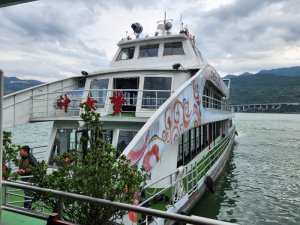
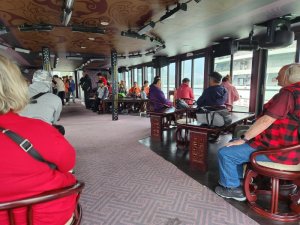
This boat was still not small, having 2 main decks for passengers, beautifully decorated and with comfortable seating. The boat was not overcrowded and had ample decks to take in the amazing views of this region.
Dragon Gate Gorge
Also known as Longmen Gorge, this is the first of the Lesser 3 Gorges you reach from Wushan as you travel the Daning river.
At 3 km long, this is the shortest of the three, stretching from the Dragon-Gate Bridge to the Rapids of Silver Nest. It is spectacular due to the mountains on both sides along which there are so many ancient sites including the remains of the longest ancient plank walkway in China.
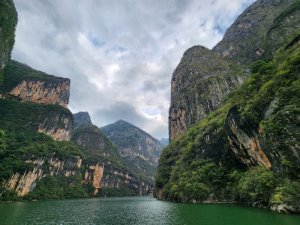
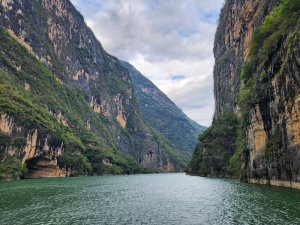
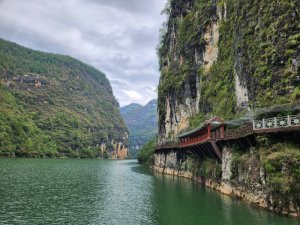
Misty Gorge
Otherwise known as Bawu Gorge, this is 10 km long, starting at the Tortoise Shoal and ending at Double-Dragon Town. Stalactites in numerous shapes and various sculptured groups have formed on both banks of the river.
Like the other 2 Lesser Gorges you are confronted with beautiful sights at each turn of the river as it makes it way through these amazing steep valleys.
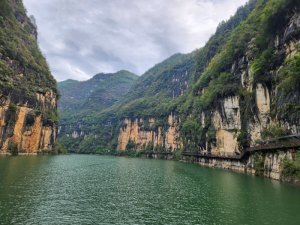
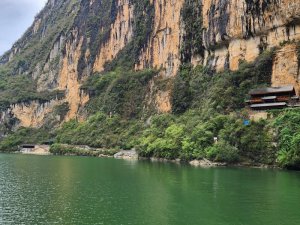
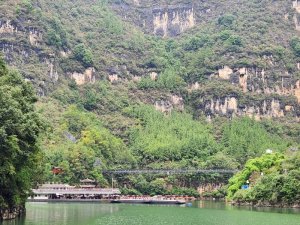
Emerald Green Gorge
The other name for Emerald Green Gorge is Dicui Gorge.
This Gorge was most shallow of the Lesser 3 Gorges, requiring a change of boats to even smaller vessels that were able to take us through.
The Emerald Green Gorge extends for 20 km from the Double-Dragon Town to Tujiaba. It is the longest of the three and was our favorite for its sheer beauty and the experience of travelling on the smaller boat. On the banks, each peak seems more beautiful than the other and the gorge lives up to its name with the river reflecting a brilliant green. Mandarin ducks swim in pairs in the river and monkeys leap from branch to branch.
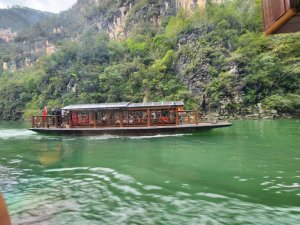
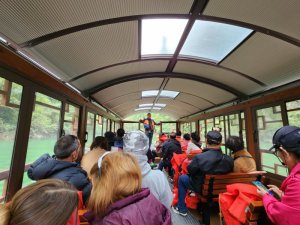
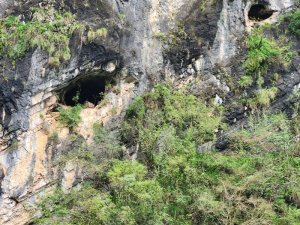
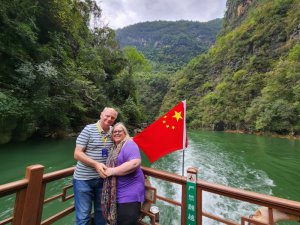
The Snowy Jade Cave from Fengdu City
Our last stop main stop along the Yangtze River was to be at Fengdu City. Located on the northern bank of the Yangtze River, Fengdu is an ancient city known as the ‘Ghost City’ to most Chinese people. This name was derived not because the city is deserted but due to folklore that is too long to include in this article. Fengdu is the gateway to the Snowy Jade Cave.
Situated in the Longhe river valley and above steep cliffs, the Snowy Jade Cave is within Chongqing province’s cave scenic area, covering some 15 square kilometers. About eight miles from the new county of Fengdu, the Snow Jade Cave is rated as China’s most beautiful by Chinese National Geography. Most of the stalactites found in the cave are white and pure as jade, hence its name.
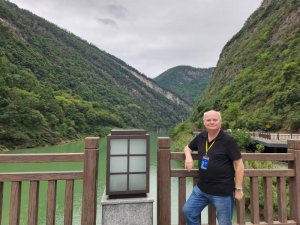
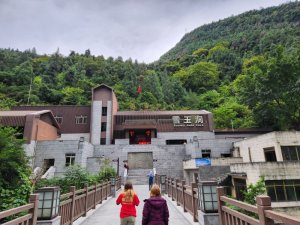
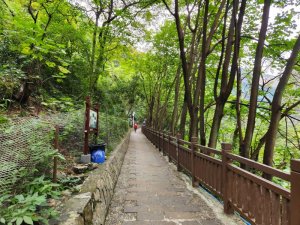
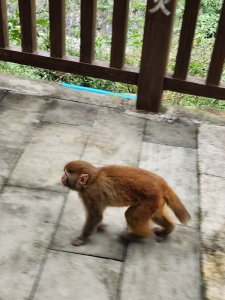
Snowy Jade Cave is a well-preserved cave in the side of a hill next to the Longhe river which converges with the Yangtze. This amazing natural spectacle was only opened to the public in 2004. We got to the cave in a tour travelling in a mini bus along the Longhe River Valley, following the course of the river all the way to the cave. The drive afforded us beautiful views of the river and valley, passing through villages of friendly people on the way.
The Snowy Jade Cave is a labyrinth of tunnels and crevices stretching a total of 1644 meters on many levels, with passages that are always changing and developing. Since the cave has many levels, it has been divided into six separate parts, namely Celebrity Gathering, Heaven on Earth, Update your Life, Northland Scenery, Heavenly Mirage, and Bright Future. You can get a map showing the entire cave complex and walking paths before entering the cave.
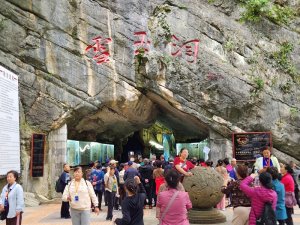
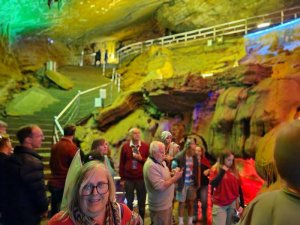
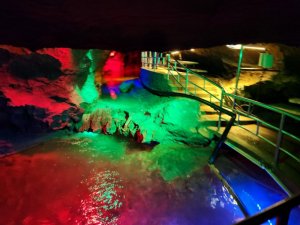

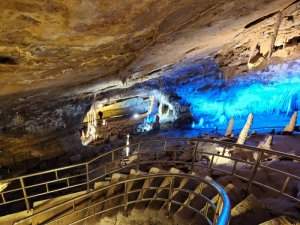
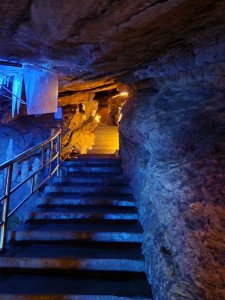
This cave is in a region famous for limestone bedrock, where water and minerals drip into the empty space from above to form wonderful sculptures in the dark.
The cave’s interior is China’s only pure-white, jade-like example whilst it continues to expand due to erosion in the surrounding karst landscape.
There are the ‘four wonders’ of the cave are referred to as:
- The coral tower in the cave is the largest of its kind in the world.
- The glittering and transparent King Stone Flag at 26 feet high is the world’s tallest and thinnest stone flag.
- The stone shield at 13 feet high is also known as the Snowy Jade Penguin. It is a source of amazement and marvel for many visitors and scholars.
- Certain groups of stalactites resemble goose necks, some as much as two yards long.
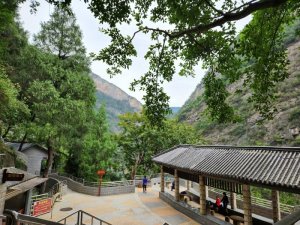
Arriving at Chongqing
From Fengjie, it wasn’t that long cruising back on the Yangtze when we arrived at our destination of Chongqing just before nightfall. We then spent our last night on board before disembarking the next day having a quick look through this city. When it comes to large cities in China, most people think about Shanghai and Beijing, but Chongqing province actually has the largest of populations in the country (31 million).
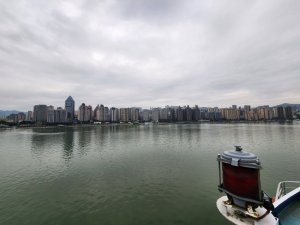
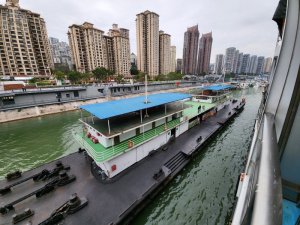
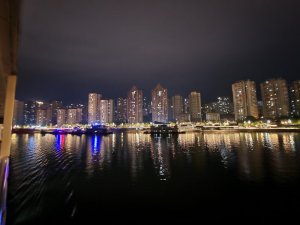
Although our adventure in China was not yet over and we were about to head next to Shanghai and beyond it was a bit sad leaving the ship. As we travelled to Chongqing airport, we left with such happy memories of our adventures through our Yangtze River cruise and all the wonderful sights we experienced.
Is cruising the Yangtze River and 3 Gorges in China for you?
What do you think of this adventure? Would this be something that interests you? Perhaps you have also experienced the Yangtze River and 3 Gorges. Please share your thoughts in the comments below.
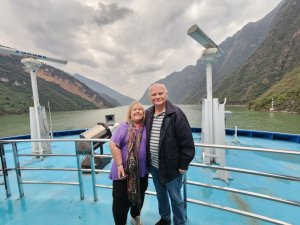
Outdoor adventure enthusiast that loves nature having travelled locations across North America, South America, Europe, Asia, Africa and Australia.
Passionate Travel Writer, Blogger and Influencer.














Leave a Reply